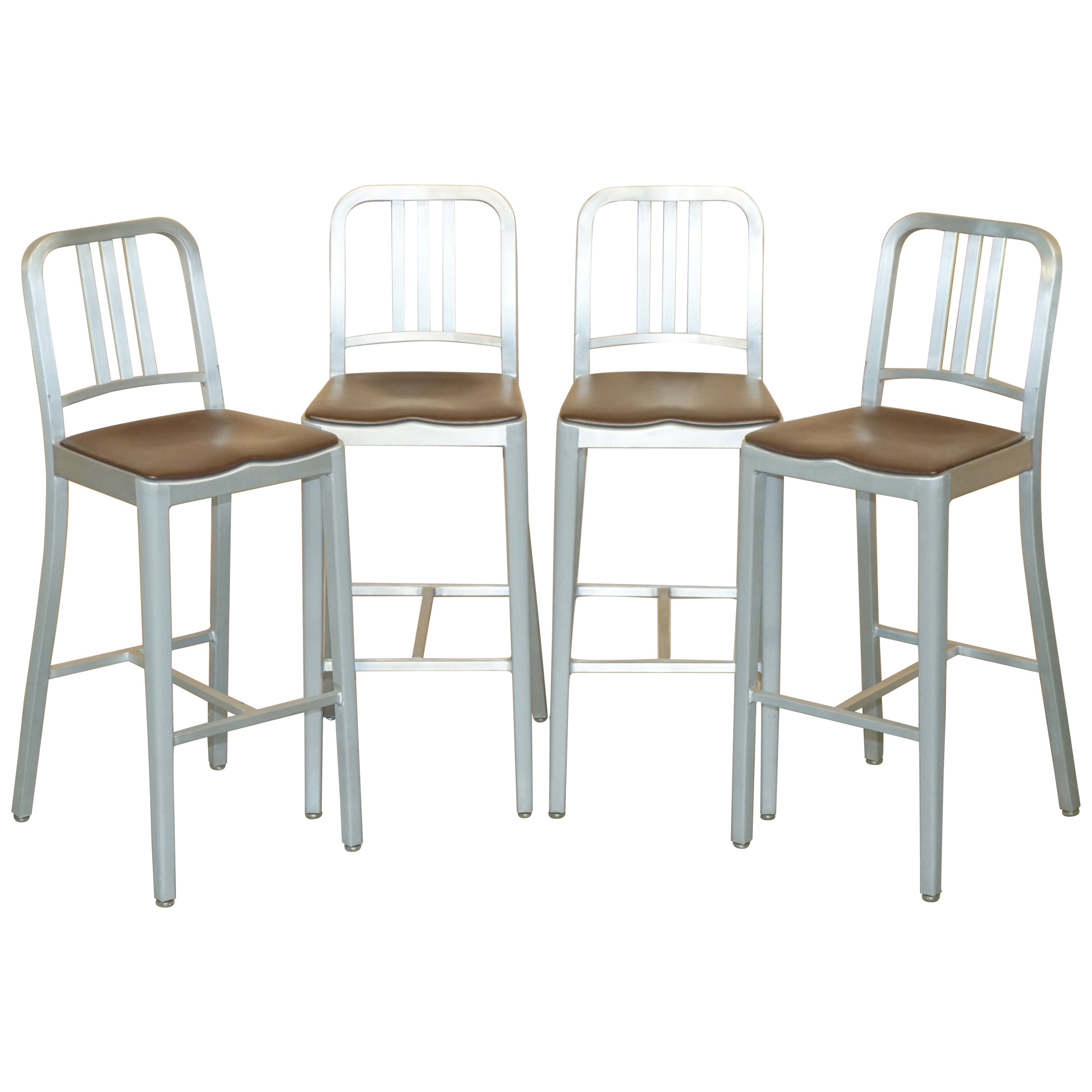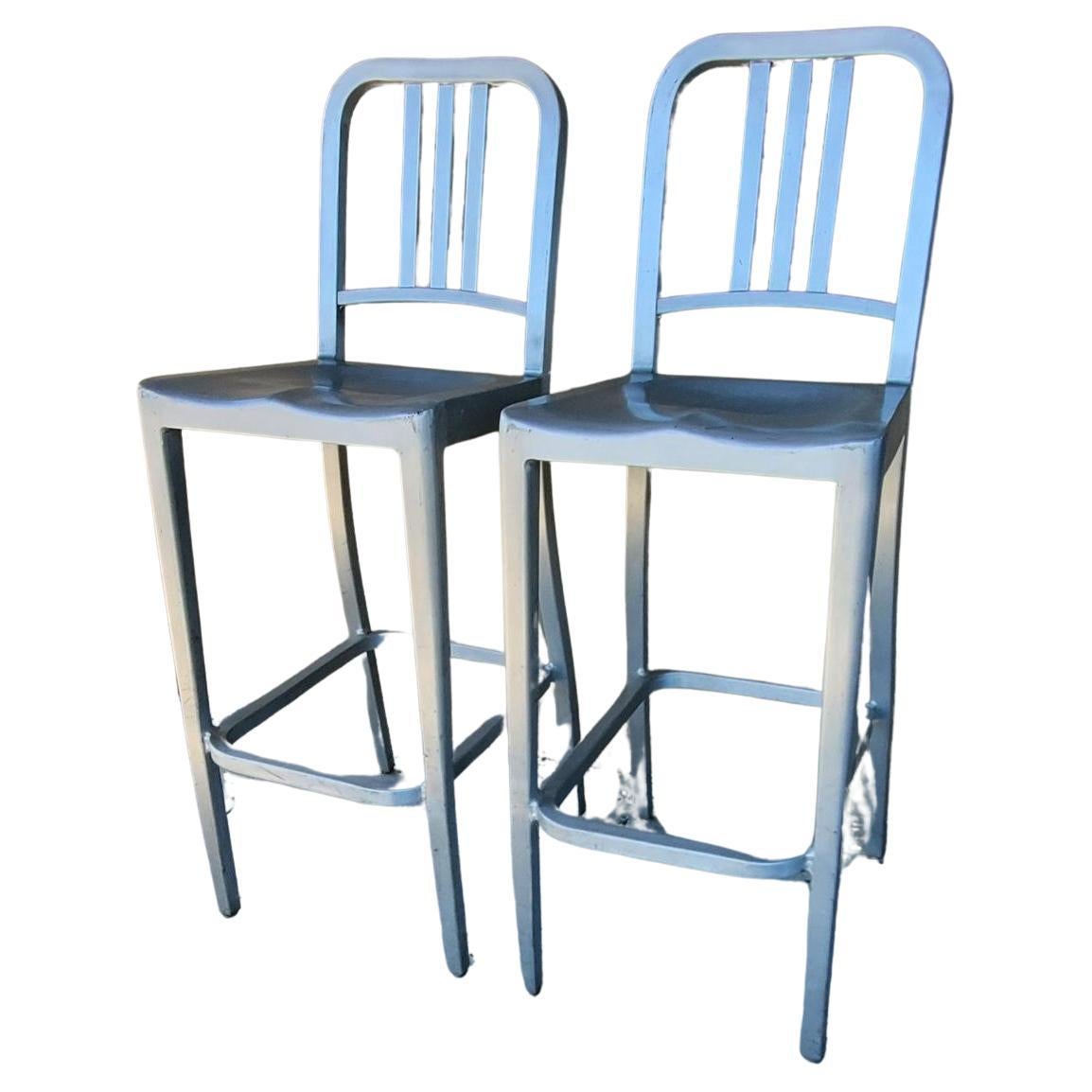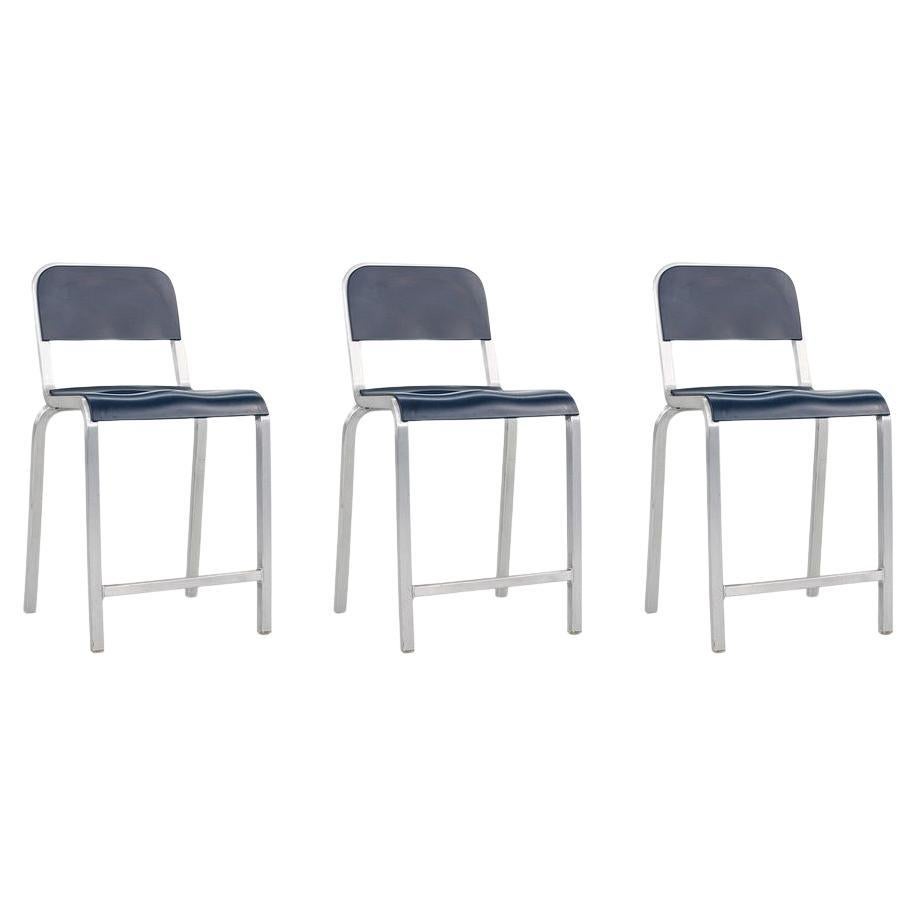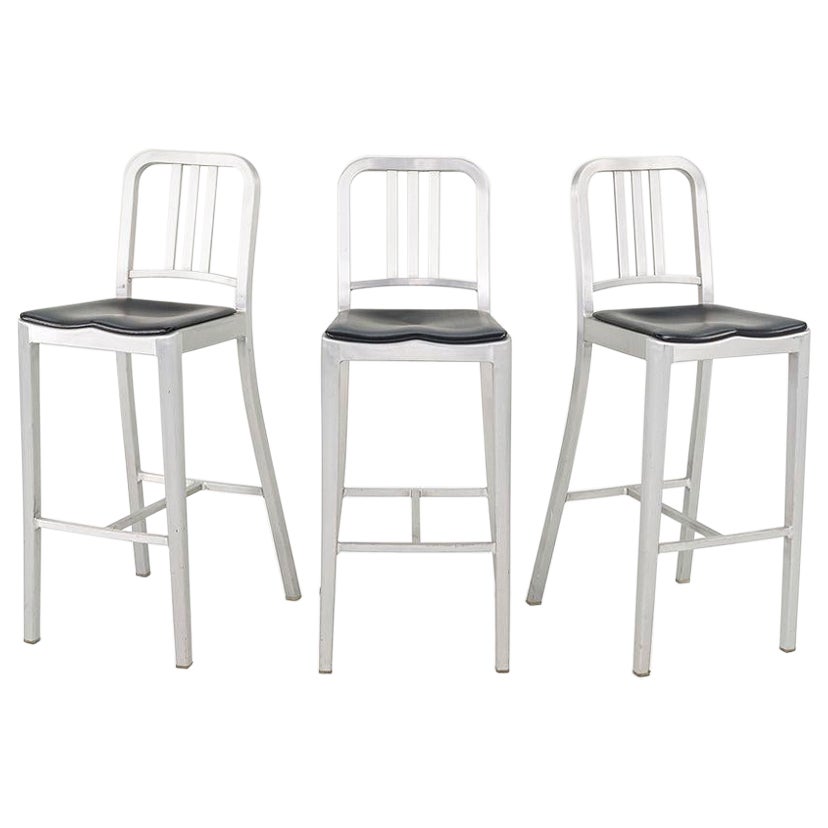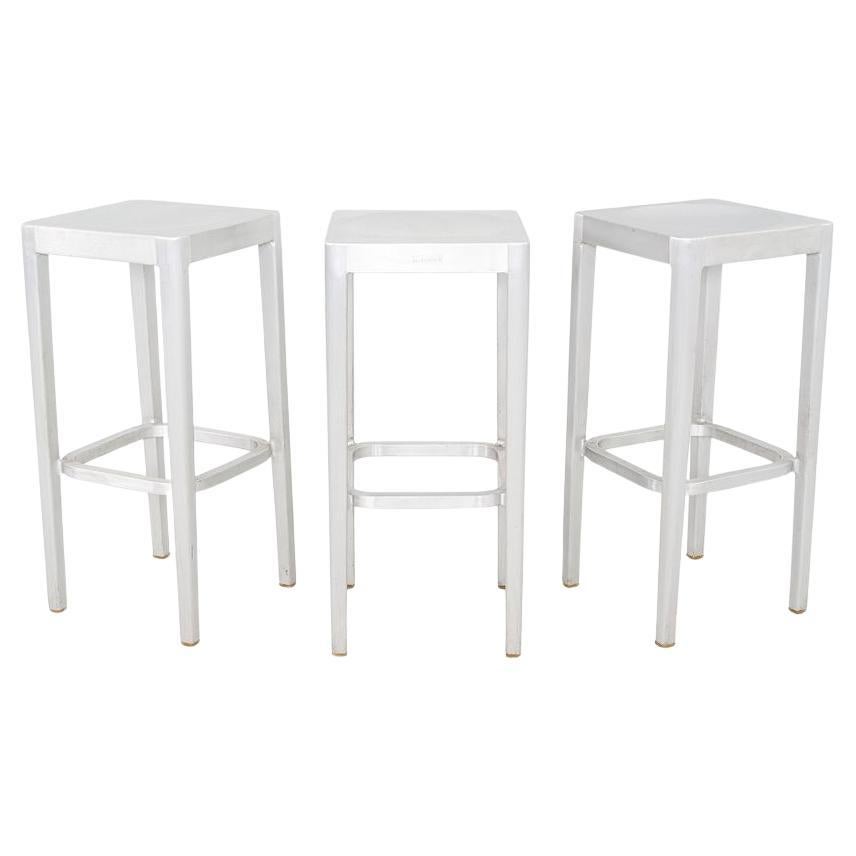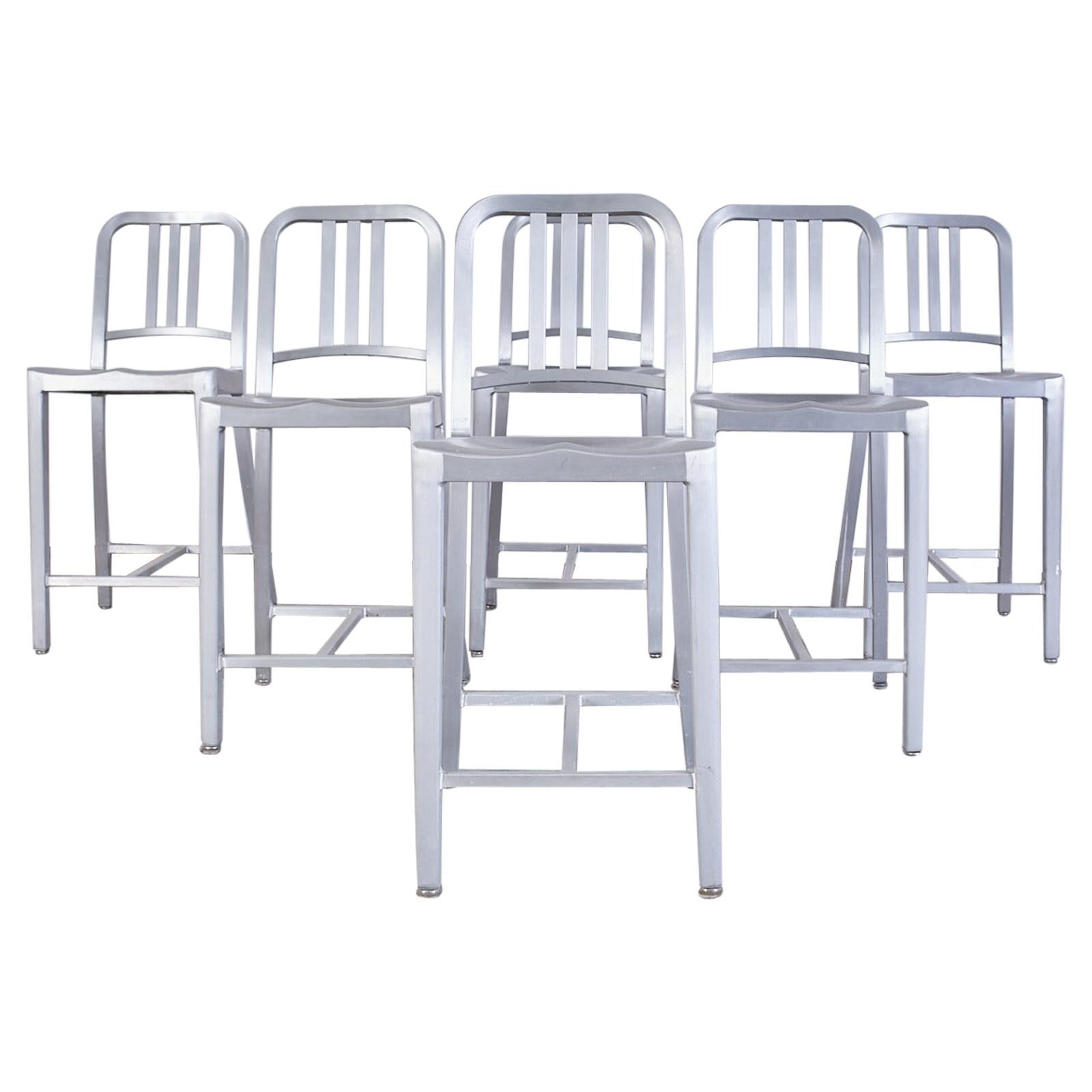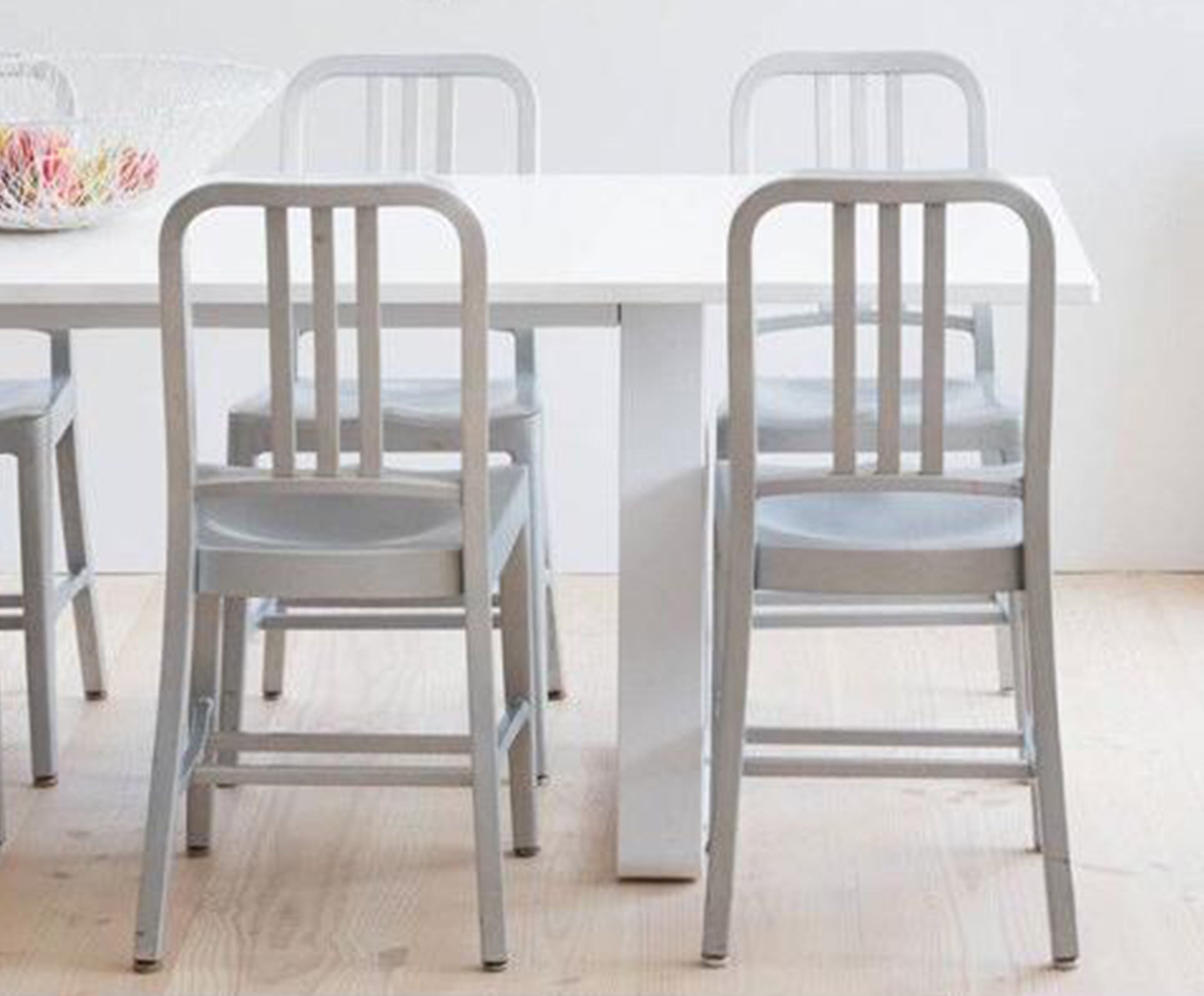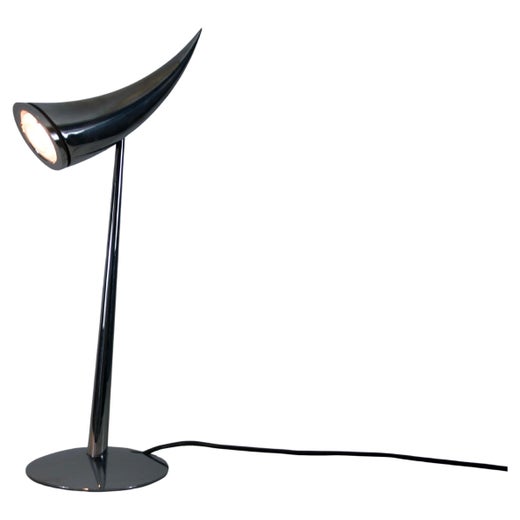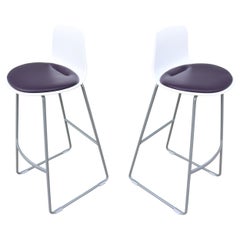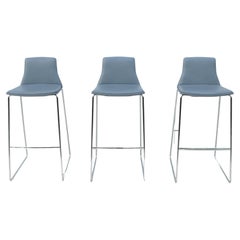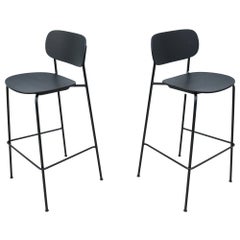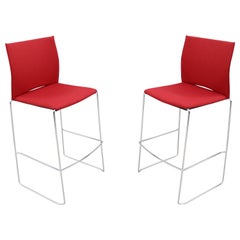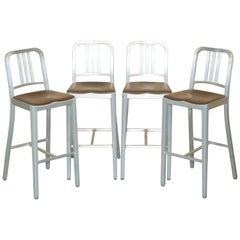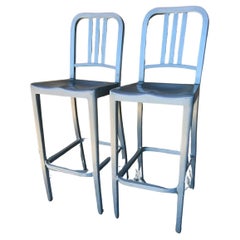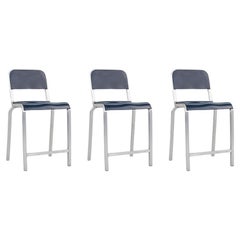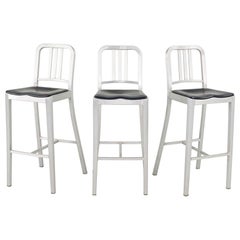Industrial Emeco Hudson by Starck Brushed Aluminum Counter Height Stools, a Pair
About the Item
- Creator:Philippe Starck (Designer),Emeco (Manufacturer)
- Design:
- Dimensions:Height: 35.5 in (90.17 cm)Width: 17 in (43.18 cm)Depth: 20 in (50.8 cm)Seat Height: 22 in (55.88 cm)
- Sold As:Set of 2
- Style:Industrial (Of the Period)
- Materials and Techniques:
- Place of Origin:
- Period:
- Date of Manufacture:2014
- Condition:Wear consistent with age and use. Both stools are in very good used condition. The aluminum frame has few minor scratches and wonderful patina due to normal use. The vinyl upholstery is in very good condition. In excellent structural condition, clean and ready to be used immediately.
- Seller Location:Secaucus, NJ
- Reference Number:1stDibs: LU7764234985382
Navy Chair
One of the world’s most recognizable chairs was originally designed by an engineer to be lightweight, fireproof, waterproof and strong enough to withstand a torpedo blast. If this sounds like the description of an industrial object and not furniture, it’s because that’s what the chair was meant to be. That engineer was Wilton C. Dinges (1916–74), and in 1944, in conjunction with experts from the Aluminum Company of America, he built a chair made of aluminum in response to the U.S. Navy’s call for seaworthy seating, suitable for use on battleships as well as submarines during World War II. This innovation is what we now know as the Navy chair.
To prove to the Navy that his chair was indestructible, Dinges threw it from the eighth floor of a hotel in Chicago. The chair bounced but did not break or bend. He secured the contract to manufacture the piece at the Electrical Machine and Equipment Company, Emeco, the company he founded in 1940, in Hanover, Pennsylvania. Since 1944, hundreds of thousands of these chairs, known as Emeco 1006, or, simply, the Navy chair, have been produced by Emeco for use on battleships, aircraft carriers and submarines.
The Navy chair was meant to be utilitarian and functional, but it is undeniably beautiful as well. The chair’s aluminum silver body and spare design are pleasing, but the three vertical back slats and distinct curved indents that characterize its seat are the piece’s most recognizable features. Using soft recycled aluminum that requires a 77-step process to convert it into a material that is three times stronger than steel, the chair is also completely handmade by Emeco’s team of seasoned craftsmen. The furniture manufacturer has always been focused on sustainability and creating “things that last.” To that end, a single Navy chair is tested to last 150 years.
In 1979, California businessman Jay Buchbinder purchased Emeco. In the 1990s, as the company struggled financially, Buchbinder’s son Gregg noticed that influential tastemakers like Giorgio Armani and hotelier Ian Schrager had been buying the Navy chair. Emeco’s legendary piece had appeared in Schrager’s Paramount Hotel in New York City, thanks to architect and designer Philippe Starck. Buchbinder targeted this untapped, high-end market, and his efforts helped turn the company’s fortunes around.
The Navy chair has since found a home in a variety of spaces, from fine-dining restaurants to art galleries. Accordingly, it has also spawned countless knockoffs. The best way to identify an original? Look for a lightweight aluminum chair with three vertical back slats that could survive a fall from an eighth-story window.
Philippe Starck
A ubiquitous name in the world of contemporary architecture and design, Philippe Starck has created everything from hotel interiors and luxury yachts to toothbrushes and teakettles. Yet for every project in his diverse portfolio, Starck has maintained an instantly recognizable signature style: a look that is dynamic, sleek, fluid and witty.
The son of an aircraft engineer, Starck studied interior design at the École Nissim de Camondo in Paris. He started his design career in the 1970s decorating nightclubs in the city, and his reputation for spirited and original interiors earned him a commission in 1983 from French president François Mitterrand to design the private apartments of the Élysée Palace. Starck made his name internationally in 1988 with his design for the interiors of the Royalton Hotel in New York, a strikingly novel environment featuring jewel-toned carpeting and upholstery and furnishings with organically shaped cast-aluminum frames. He followed that up in 1990 with an equally impressive redesign of the Paramount Hotel in Manhattan, a project that featured over-scaled furniture as well as headboards that mimicked Old Masters paintings.
Like their designer, furniture pieces by Starck seem to enjoy attention. Designs such as the wedge-shaped J Series club chair; the sweeping molded-mahogany Costes chair; the provocative Ara table lamp; or the sinuous WW stool never fail to raise eyebrows. Other Starck pieces make winking postmodern references to historical designs. His polycarbonate Louis Ghost armchair puts a new twist on Louis XVI furniture; his Out-In chair offers a futuristic take on the classic English high-back chair. But for all his flair, Starck maintains a populist vision of design. While one of his limited-edition Prince de Fribourg et Treyer armchairs might be priced at $7,000, a plastic Starck chair for the Italian firm Kartell is available for around $250. As you will see on 1stDibs, Philippe Starck’s furniture makes a bold statement — and it can add a welcome bit of humor to even the most traditional decor.
- ShippingRetrieving quote...Shipping from: Secaucus, NJ
- Return Policy
More From This Seller
View All21st Century and Contemporary American Modern Stools
Steel
21st Century and Contemporary American Modern Stools
Chrome
2010s Danish Scandinavian Modern Stools
Steel
2010s American Modern Stools
Steel, Chrome
21st Century and Contemporary American Modern Stools
Metal
2010s Italian Modern Stools
Metal
You May Also Like
20th Century English Mid-Century Modern Stools
Aluminum
Late 20th Century American Mid-Century Modern Stools
Aluminum
2010s American Modern Stools
Aluminum
2010s American Modern Stools
Aluminum
2010s American Modern Stools
Aluminum
20th Century American Modern Stools
Aluminum
